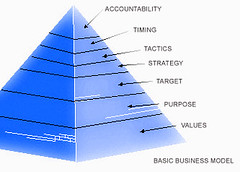As the 20th century was coming to a close, Advertising Age (AdAge) launched a major chronicle, the history of the era's advertising industry. It's a remarkable piece of work that can be seen online and contains the top 100 ad campaigns and people, along with the top 10 jingles, slogans, and icons.
I have shared segments of it in my public relations class for several years, under the auspices that public relations needs to work hand-in-hand with advertising (or vice versa if you prefer). The other reason I share it is simple. I like to show public relations professionals what they miss out on because for all the "rules" they have to follow, the best in advertising does not.
No, I am not talking about "rules" like whether or not there needs to be a call to action (although, I suppose, maybe there doesn't need to be). I'm talking about rules like those parodied in a Communication Arts classic article "Nine Ways To Improve A Volkswagen Ad," which, not coincidentally, targets the very ad that AdAge calls the best in history.
Here's an example: rule Number One from the classic parody touts the idea that we must always "think positive" in advertising. Applying this rule to the Volkswagen ad is easy enough: instead of the headline "Think Small," the headline should be "Think Big." And so on goes the list of rules, until one of the best campaigns in advertising history is nothing more than a shell of its former glory because it ends up looking like everyone else. In a previous post I link to the 2006 version of the Volkswagen parody, which uses Apple and Microsoft. The idea is the same.
I guess it's for this reason, my background in advertising, I also prefer the term "process" to "formula" with the distinction being that one guides you through strategic thinking (like a core message) while the other is nothing but a bunch of rules. The net result is that my favorite answer to most broad communication questions is "it depends." Because it really does depend.
For me, everything becomes more clear when it is applied to a single case study, because the answers are frequently different in one case study than another. Blogs, for example, are much like that. Lots of people are trying to invent formulas as to what makes the best blogs better than average blogs. The answer is actually pretty simple: the best blogs have a strategy. Everything else, whether it's online chat or cluster maps or anonymous comments, depends entirely on each specific blog.
If you don't believe me, perhaps you'll believe Bill Bernbach (1911-1982). Bernbach never read a blog, but there's a reason he emerged as No. 1 on AdAge's 20th century honor roll of advertising's most influential people. "Rules are what the artist breaks; the memorable never emerged from a formula," he said.
That's good enough for me. But just in case it's not good enough for you, take a look at all 100 campaigns featured by AdAge. They all have one thing in common. They all broke whatever rules were being enforced at the time. The same holds true for businesses in general, I suppose. The biggest success stories always seem to be innovate ideas no one else is doing.
I have shared segments of it in my public relations class for several years, under the auspices that public relations needs to work hand-in-hand with advertising (or vice versa if you prefer). The other reason I share it is simple. I like to show public relations professionals what they miss out on because for all the "rules" they have to follow, the best in advertising does not.
No, I am not talking about "rules" like whether or not there needs to be a call to action (although, I suppose, maybe there doesn't need to be). I'm talking about rules like those parodied in a Communication Arts classic article "Nine Ways To Improve A Volkswagen Ad," which, not coincidentally, targets the very ad that AdAge calls the best in history.
Here's an example: rule Number One from the classic parody touts the idea that we must always "think positive" in advertising. Applying this rule to the Volkswagen ad is easy enough: instead of the headline "Think Small," the headline should be "Think Big." And so on goes the list of rules, until one of the best campaigns in advertising history is nothing more than a shell of its former glory because it ends up looking like everyone else. In a previous post I link to the 2006 version of the Volkswagen parody, which uses Apple and Microsoft. The idea is the same.
I guess it's for this reason, my background in advertising, I also prefer the term "process" to "formula" with the distinction being that one guides you through strategic thinking (like a core message) while the other is nothing but a bunch of rules. The net result is that my favorite answer to most broad communication questions is "it depends." Because it really does depend.
For me, everything becomes more clear when it is applied to a single case study, because the answers are frequently different in one case study than another. Blogs, for example, are much like that. Lots of people are trying to invent formulas as to what makes the best blogs better than average blogs. The answer is actually pretty simple: the best blogs have a strategy. Everything else, whether it's online chat or cluster maps or anonymous comments, depends entirely on each specific blog.
If you don't believe me, perhaps you'll believe Bill Bernbach (1911-1982). Bernbach never read a blog, but there's a reason he emerged as No. 1 on AdAge's 20th century honor roll of advertising's most influential people. "Rules are what the artist breaks; the memorable never emerged from a formula," he said.
That's good enough for me. But just in case it's not good enough for you, take a look at all 100 campaigns featured by AdAge. They all have one thing in common. They all broke whatever rules were being enforced at the time. The same holds true for businesses in general, I suppose. The biggest success stories always seem to be innovate ideas no one else is doing.


















